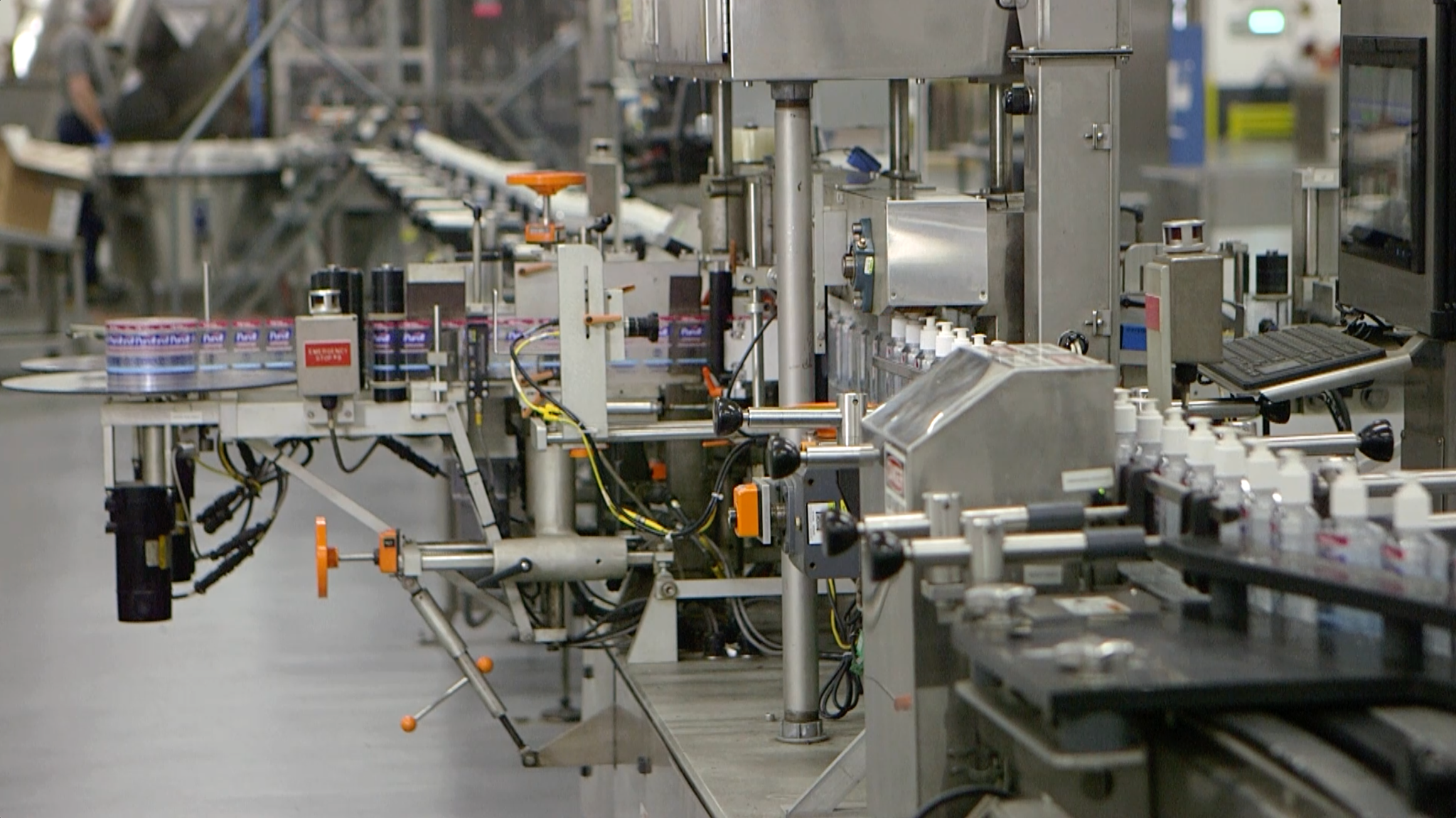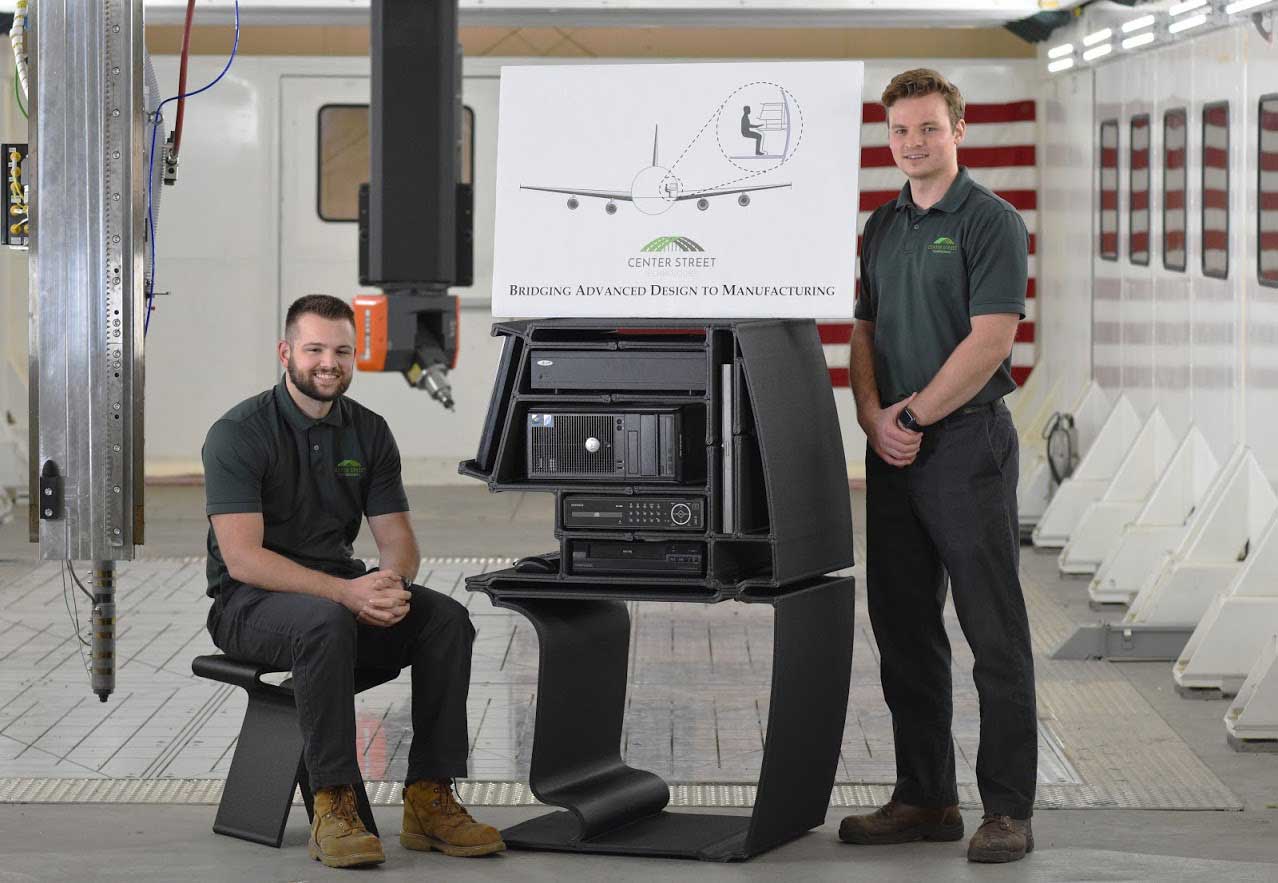In just two days, more than 2,000 Ohio manufacturers joined the fight against COVID-19. It was March 2020. The governor had just put out an urgent call for help. Spurred by stories of nurses wearing garbage bags and doctors using the same dirty masks for a week, the Ohio Manufacturing Alliance to Fight COVID-19 was formed to make personal protective equipment (PPE).
MAGNET was one of the Alliance leaders, working alongside the Ohio Manufacturers’ Association, the Ohio Hospital Association, the Ohio Manufacturing Extension Partnership (Ohio MEP), and JobsOhio. MAGNET started by producing 1 million reusable face shields.
“We were on the phone all hours of the day and night. Tracking down plastic leads. Bringing decision makers together to make lightning-fast decisions on funding. Driving the prototype back and forth across Cleveland to improve it with doctors’ feedback. The way it all came together was incredible. We went from an idea to prototype to production in less than two weeks,” says Dr. Ethan Karp, President & CEO of MAGNET.
All told, the Alliance produced 15 million pieces of PPE in a few months as thousands of Ohio manufacturers made a powerful pivot. They went from making toys to face shields, from whiskey to hand sanitizer, from mattresses to medical gowns. ROE Dental Laboratory in Independence, Ohio, which normally makes crowns and dentures, was part of the pivot.
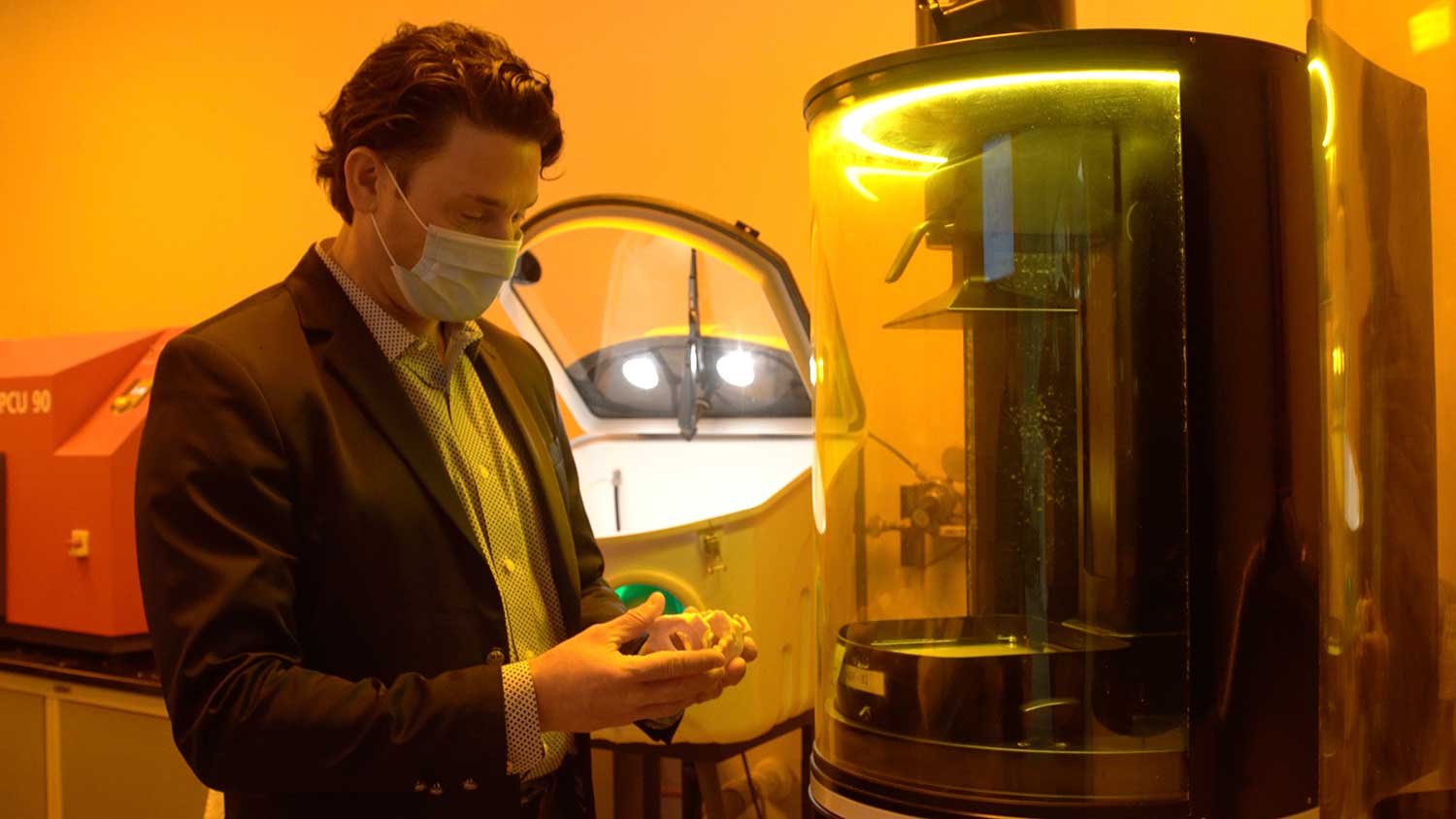
ROE Dental in Independence, Ohio.
“Unfortunately, and with a heavy heart, we laid off probably about 70% of our workforce with the full intention of hiring everyone back. But shortly after that happened, I started looking into what we could do with all the technology and 3D printers we have here,” says BJ Kowalski, President of ROE Dental Laboratory.
In April, ROE started working with the Alliance to make face shields and nasal swabs with 3D printing.
“At the time, the two main producers of nasal pharyngeal swabs were woefully undersized for the worldwide need. They couldn’t handle the demand because everyone wanted to get tested. So, I made a decision to triple our number of 3D printers, and we went ahead and ordered another 40-odd printers. We worked seven days a week, probably 12, 13 hours a day. And the printers never stopped. They worked 24 hours a day,” says Kowalski.
In two months, ROE made 500,000 nasal swabs, which allowed the government of Ohio to ramp up COVID-19 testing and paved the way for the state to safely re-open. Without these swabs, lockdowns and shutdowns would have continued for weeks longer – costing billions more.
“I wanted to get my people back to work. And it was also an opportunity to help the people of Ohio, our state, which was even better,” says Kowalski.
Despite the disruptions of the pandemic, because the company branched out into new products it was able to grow its workforce from 180 to 220 people in the last year. The fact the company had already transformed its operations and trained its workforce in digital production and 3D printing was a huge benefit when it came to the transition.
“We’ve really evolved into computer screens and milling machines and working with a mouse as opposed to hand tools. So, we have a very technologically advanced staff. And that really helped us make this transition quite easily. I know in my industry, the companies that haven’t made that plunge into technology are falling way behind. And many of them won’t make it because not only does technology allow you to do things faster, but it also allows it to be more consistent, to be higher quality, and at a lower price point,” says Kowalski.
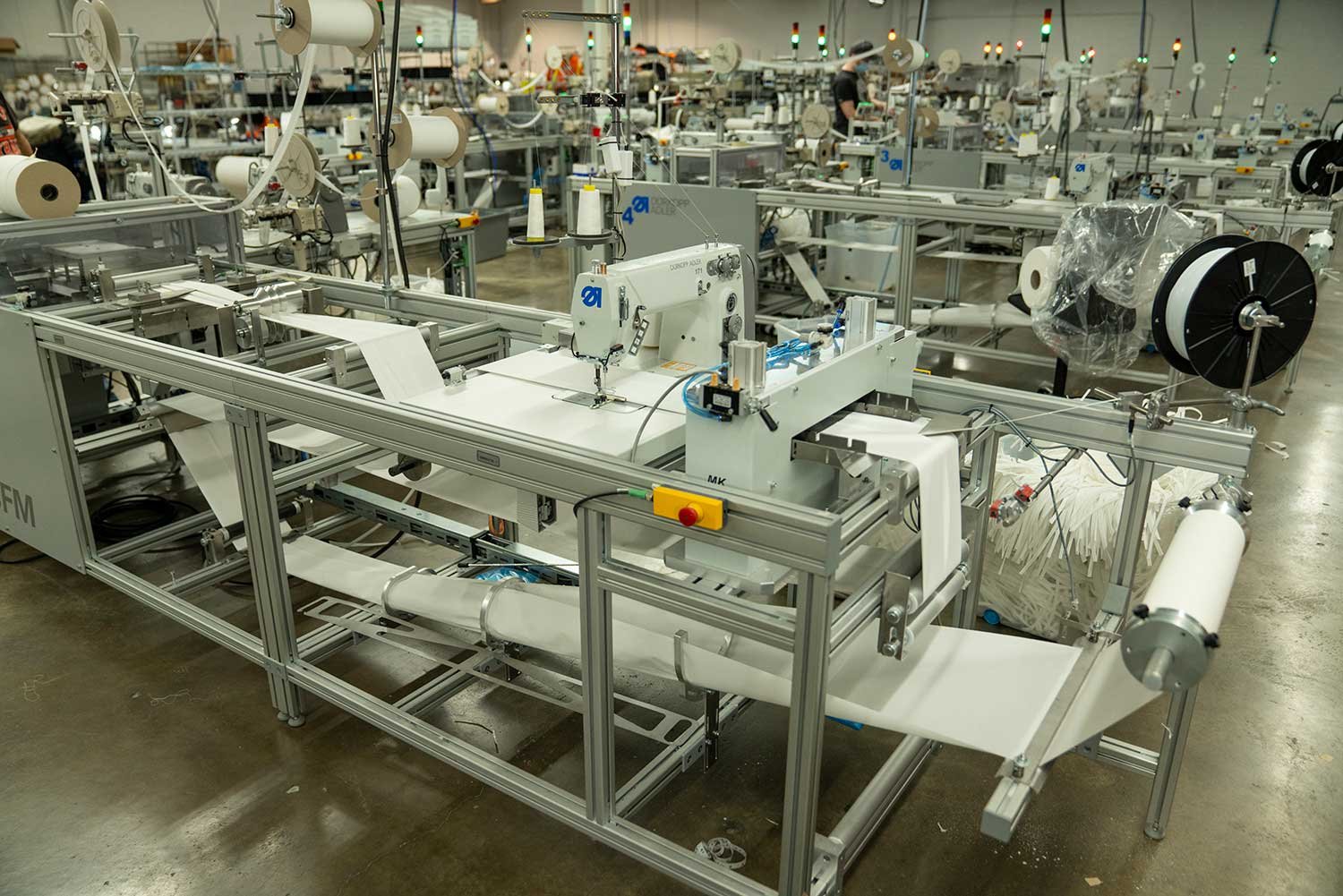
Automated sewing machines at Buckeye Mask Company.
Innovation and technology were key for quickly making hundreds of thousands of testing swabs. They also fueled the production of millions of “made in Ohio” face masks. Carla Macklin is a successful “serial entrepreneur” who was working with MAGNET as a consultant to help sewing manufacturers convert their production to gowns and masks. Even with heroic efforts, they were only able to produce 150,000 masks a week by hand. And they were simply too expensive and of variable quality.
That’s when Macklin decided to start a mask business.
“At the end of March 2020, mask pricing was anywhere from about $3 to $5 per mask. Not only was it extremely expensive for the State of Ohio to purchase millions of them, but there was simply not enough production to make what they needed. By June, global supply opened up and the market was flooded with large quantities of inexpensive masks, but they were made in countries with questionable hygiene and labor practices, and often requiring payment in full before goods were shipped. I knew that to serve Ohio’s need, we needed to locally make quality masks at globally competitive prices. And to do that, we needed automation,” says Macklin.
But finding the right automated sewing technology and paying for it posed new challenges. Luckily, working with MAGNET, Macklin was able to find Durkopp Adler, a German sewing system equipment manufacturer.
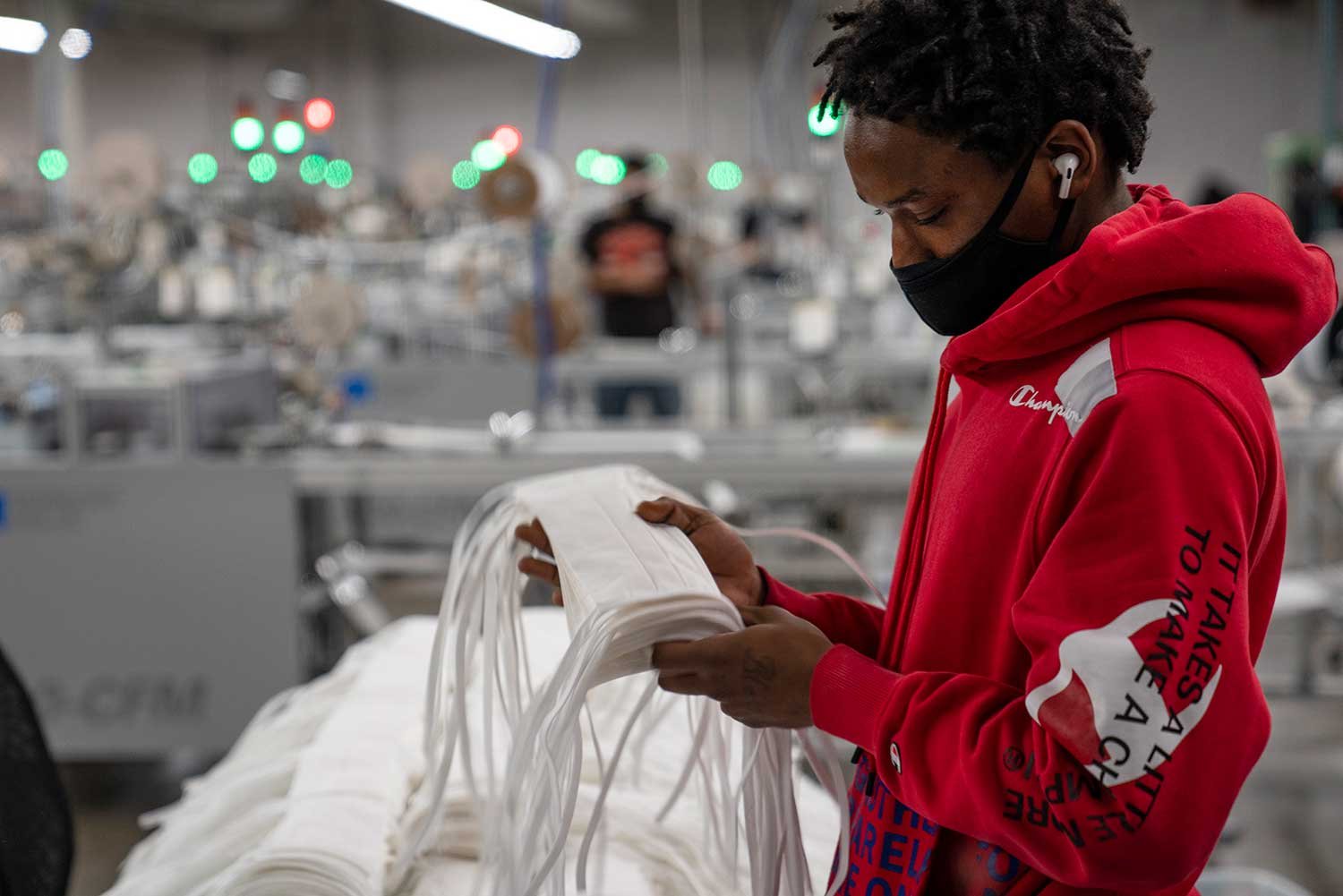
Masks being made at Buckeye Mask Company.
“They set to work and designed this equipment in an extremely rapid fashion. We had a machine designed and built in three months, which is absolutely breakneck,” says Macklin.
Next, she had to find $1.8 million to buy nine automated sewing machines. Through MAGNET, Macklin was connected to JobsOhio and received innovative funding in the form of a loan-loss guarantee. If the startup works, the government gets its money back and a share of the profits. If the technology or business fails, the government and startup share the losses.
“Their loan was unusual in that they acted like an investor. JobsOhio shared the risk with us up front but will also share the upside beyond loan repayment if the business is successful. I think this loan model – sharing in both the upside and downside risk along with the company owners – is a really good model for the state to think about if they want innovation to thrive in certain sectors,” says Macklin.
Thanks to this loan, which showed the Ohio government’s willingness to invest in technology innovation, Macklin opened the Buckeye Mask Company in August 2020. The company secured a contract with the Ohio Bureau of Workers’ Compensation to supply 6 million masks and now has 25 people making about 45,000 masks a day.
“It really is nice to be part of an effort to not only make a product in an innovative way, but also provide something that is potentially saving lives and protecting people,” says Macklin.
Automation allows Buckeye to produce masks domestically at competitive prices. And the company is actively looking for supply chain efficiencies to be even more competitive globally. With the future of mask wearing uncertain, Macklin is also looking at opportunities to diversify. She’s not bothered by uncertainty though. The way she sees it, every manufacturer is facing it on some level.
85% of NEO companies say they are using automation to supercharge productivity rather than replace people.
(Source: Ohio MEP 2020 Manufacturing Survey)
“The world is evolving, and we can’t expect manufacturing in Ohio to remain the same. What was amazing in the early days of the pandemic was the willingness for manufacturers to jump in and make change in the face of a situation that was so unusual and so desperate. We’re certainly capable of massive change when we set our collective minds to it. That can be an inspiration to continue to push for new ideas, drive new products and explore new technologies and automation. We will never be cost competitive unless we innovate with advanced technologies,” says Macklin.
According to MAGNET, that’s probably the single greatest lesson the manufacturing industry has learned during the pandemic. Technology is the key to unlocking competitiveness and fueling reshoring.
“The leaders of these companies made really bold investments in technology, and it’s paying off for them. By taking those smart risks, the companies are actually fueling reshoring, giving themselves a competitive advantage, and future-proofing their own profits,” says Karp.
The pandemic reminded Northeast Ohio that it can make things that haven’t been made here for decades. That it can compete on quality and price by using cutting-edge Industry 4.0 technologies such as 3D printing, collaborative robots, sensors, and artificial intelligence. That the dream of bringing home jobs from overseas and fueling a true American manufacturing revival is possible.
“The pandemic showed us our potential. It showed us that we can be a global leader in smart manufacturing because we have all the pieces. We have the manufacturers. We have the talent. We have the know-how. We have the educational institutions. We have the will. And we have a hundred-year history of bouncing back and getting stronger after every single challenge. We can tap into that and we can lead the world,” says Karp.
During a dark time, Northeast Ohio’s manufacturing industry came together to save lives. The challenge post-pandemic will be to maintain that sense of urgency and collaboration when it comes to reinventing the region to lead the world in smart manufacturing.

